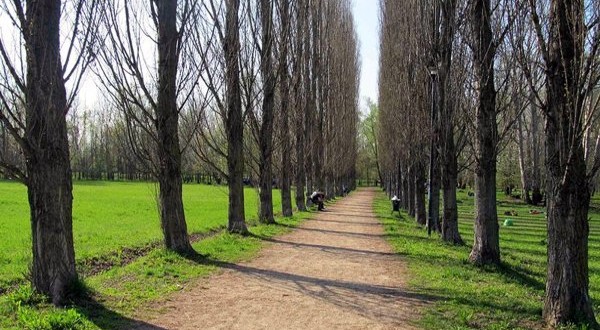
The Nonino family would be the first to tell you that there is no such thing as magic — only hard work and passion. And, if anything comes close to magic it is their matriarch, Giannola Nonino (nee’ Bulfoni in 1938 in Percoto (UD)) also known as the Queen of Grappa.
When I was growing up with one foot in the US and the other in Italy, my knowledge of grappa was that it was a sort of “moonshine” made by farmers for farmers to brace them from the cold hard work in the fields. As I got older, grappa came into vogue with cherries or pears dangerously and deliciously drowned in in beautiful big glass jugs brimming with grappa. I say dangerously because one day I actually fell out of my chair after unwisely breaking into one of those jugs with my college roommate.
Then came the trend of unusually shaped, often tall clear white bottles of grappa – it was more of a “design” niche gift than something that would actually be consumed.
I really only learned to appreciate grappa after arriving to Trieste and being exposed to the Nonino mystique. But Nonino is more than it’s grappa; it’s its family, its history, its forward thinking not just in the way of making grappa, but in the way it values, agricultural traditions, the people who work the land, the families of those people. Nonino is its belief in the region and its people.
Over the years, I have had the opportunity to meet and get to know Giannola, Benito and their 3 daughters, Antonella, Cristina and Elisabetta. Giannola is, as famed Orchestra director Claudio Abbado nicknamed her, “The Volcano”, and her daughters are no less forces of nature. Together they run the distillery and the company with passion and indefatigable enthusiasm inducting every new member of the family into service. This is most evident at their annual Premio Nonino, an award ceremony created to recognize men and women whose contributions to science, literature, philosophy, and agriculture are deemed extraordinary. The family has a prescient ability to pick winners who go on to receive Nobel prizes. Each year the presence of Nonino offspring onstage seems to grow exponentially and the predominance of females in leading roles within the company grows along with it.
Giannola married into the business. Benito’s father had made grappa and later his mother, widowed in 1944 took over becoming the first “grappaiola”. As Giannola tells it, they basically traded in trash or “pomace”, after all, grappa is made with what’s leftover from winemaking, skins, seeds, and stems. She threw herself into the business, helping her husband’s family. But she wanted more and she believed in the potential of the humble grappa. She convinced the farmers, who supplied her with the pomace, to keep separate the remnants of each pressing, rather than throwing them all together and that is how she came up with making grappas from single varieties rather than blends. They made the first “Monovitigno” (single varietal) in 1973 using the prized and delicate Picolit grape, followed by the introduction in 1974 of the Ribolla grappa.
In 1975, while researching ancient indigenous Friulian vine varieties to distill, the Noninos discovered that the most representative of them – Schioppettino, Pignolo and Tazzelenghe, along with Ribolla Gialla – were dying out, as their growing had long been discouraged in favor of first German and then French varieties to satisfy the tastes of the ruling classes.
That same year the Nonino Risit D’Aur Prize was launched to acknowledge, reward and stimulate the cultivation of these vine varieties with the ultimate goal of having them recognized as unique to the region and thus preserving the biodiversity of the territory.
Over the years, the Nonino family has not only revolutionized the grappa industry, but it has dominated it and championed it while always giving back to the community that makes its existence possible, striving to preserve the culture and traditions of the agricultural community — the “Cultura Contadina” on which they depend.
While the Noninos have successfully raised the profile of the humble grappa to a level of status and elegance — Giannola cites the time that Gianni Agnelli sent his driver to the distillery to purchase 50 bottles, or when Marcello Mastroianni dropped to his knees and kissed her hand to demonstrate his appreciation for their product — The Nonino brand ranked number 8 of the top 100 Italian brands. And yet, the Noninos remain accessible and authentic. They are the same with celebrities, scions of industry, Nobel prize winners as they are with their employees or local farmers, old friends or even new acquaintances as myself.
Today the Nonino family has over 100 acres of experimental vineyards (in collaboration with the National Institute for Viticulture of Conegliano) growing Fragolino, Merlot, Moscato, Picolit, Ribolla Gialla and Schioppettino grapes in Buttrio – Friuli. The Nonino Distilleries consist of 5 Artisanal distilleries, each with 12 copper batch steam stills, one for each member of the family plus a still for each grandchild, as a sign of continuity in the Art of Distillation. Natural aging occurs in barriques and small casks under seal and permanent surveillance by the Customs and Monopoly Agency. Today the 6 Grappa Nonino Aging Warehouses house 2350 small casks and barriques of different types of wood, among them; Oak, Acacia, Wild Cherry and Ash Wood.

In fact Benito Nonino established 25 acres of woodland located between the distillery and the Borgo (the official Nonino Welcome Center). It is comprised of indigenous Friulian specimens; two kinds of Maples, White Hornbeam, Black Hornbeam, Beech, Black Walnut, Black Alder, Red Oak and many more. There is also a section dedicated to fruit bearing trees with apple and cherry varieties which runs along the Alpe Adria Radweg bike trail leading to the sea. The woods also preserves protects and nourishes the local fauna like squirrels, hares, deer, pheasants, birds of prey, small birds, wood peckers and many song birds.
Then there is the Borgo Nonino; a compound consisting of 6 rural buildings, the oldest of which dates back to the age of Napoleon. It is situated 500 meters from the Nonino Distilleries with Benito’s forest as a backdrop. Often the site of family birthday celebrations it serves as a welcome center and departure point for tours, tastings and purchases of Grappa, Distillates and Amaro Nonino. Filled with a blend of antiques, design elements and panoramic windows it is a gorgeous location in the heart of Friuli. There are even guest rooms available should the need arise…!
A more recent innovation is the marketing of the Nonino spirits in cocktail form for which the combinations seem endless. This has been met with great success and a mixology guide is now widely available– you can see it here:
To arrange a visit to the Nonino Distillery, reservations can be made by sending an e-mail to borgononino@nonino.it or calling +39 0432 675242.
BORGO NONINO
Via Cavour, 2
33050 Persereano (UD)


























